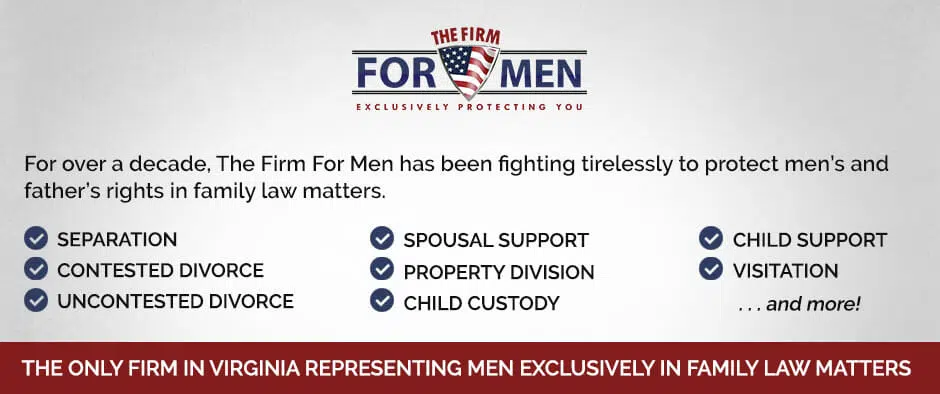Custody cases stemming from divorce in Virginia fall into two categories: legal custody and physical custody. Within each of these areas, custody can be joint or sole, so a Virginia parent can have legal custody for a child but share physical custody, for example. If the whole process of child custody seems confusing, you are no dummy. The services of a good lawyer during and after your divorce can help you understand the way child custody works.
How the Courts Determine Custody
The Code of Virginia lays out how courts determine custody for children following a divorce. Under Section 20-124.3, courts must consider 10 factors, eight of which we can rattle off without much concern:
- Age and physical and mental condition of the child
- Age and physical and mental condition of each parent
- Existing relationships between each parent and the child
- Each parent’s ability to accurately “assess and meet the emotional, intellectual, and physical needs of the child”
- The child’s needs relative to relationships with siblings, peers and extended family members
- Behavior of each parent in supporting the child’s contact with the other parent, including denial of visitation or access to the child
- Any history of family abuse or sexual abuse
- Other factors deemed necessary and proper by the court
Two Standouts: Maintaining Contact & The Child’s Wants
In thinking about the basics of child custody in Virginia, any dummy needs to be very mindful of two determining factors the courts must use, by law, in seeking what is best for the child. These are also spelled out in 20-124.3 and deserve full attribution:
“7. The relative willingness and demonstrated ability of each parent to maintain a close and continuing relationship with the child, and the ability of each parent to cooperate in and resolve disputes regarding matters affecting the child;
8. The reasonable preference of the child, if the court deems the child to be of reasonable intelligence, understanding, age and experience to express such a preference;…”
These are the two critical issues for most Dads, dummies or smarties. If you, in separating from your child in order to start the one-year clock on a no-fault divorce, do not maintain contact with your children, your almost-ex-wife can point to that lack of a “close and continuing relationship” as a reason she, not you, should have custody. Once you move out, keep in constant touch with your kids!
A common belief—often perpetuated by angry spouses—is that the child has a prominent voice in deciding her or his own future with a parent. Yet the child’s opinion is only one of 10 factors considered by the court, and has to overcome the four hurdles of “intelligence, understanding, age and experience.”
No Presumption
According to the Code of Virginia, Virginia law does not assume the mother to be the better parent for physical custody. In 20-124.2, the Code of Virginia states,
“In determining custody, the court shall give primary consideration to the best interests of the child… As between the parents, there shall be no presumption or inference of law in favor of either. The court shall give due regard to the primacy of the parent-child relationship… The court may award joint custody or sole custody.” (emphasis added)
Joint VS. Sole Custody, Legal VS. Physical Custody
Joint legal custody, as spelled out in 20-124.1, means both parents retain joint responsibility for the control, care, and decision-making of the child. The sorts of decisions the parent or parents with legal custody must make include education, religion, and medical issues.
Joint legal custody is not the same as joint physical custody, often preferred by most divorcing parents and many Virginia courts. If both parents are seen as fit and proper parents, the children will be shared between the two parents’ homes. The movement between the homes is not seen as visitation; the child may be two weeks at one parent’s home, then two weeks at the other.
Sole custody means the child is fully in the care of only one parent. The other parent may have visitation rights, but the child’s permanent home is with one parent only. Visitation is either worked out before the divorce proceedings or by the court. The non-custodial parent usually gets far less time with the children than the custodial parent.
A court can create a veritable spider’s web of permutations of custody. One parent could have sole physical custody but both parents could have legal custody. One parent could have sole legal custody but the two parents could share physical custody. Safeguard your rights and your children’s security by getting a good attorney.
Child Custody from the Father’s Perspective
For more than just a crash course in child custody, turn to The Firm for Men. Call us at 757-383-9184 to set up an appointment with one of our experienced attorneys. We focus on child custody from the man’s perspective.


